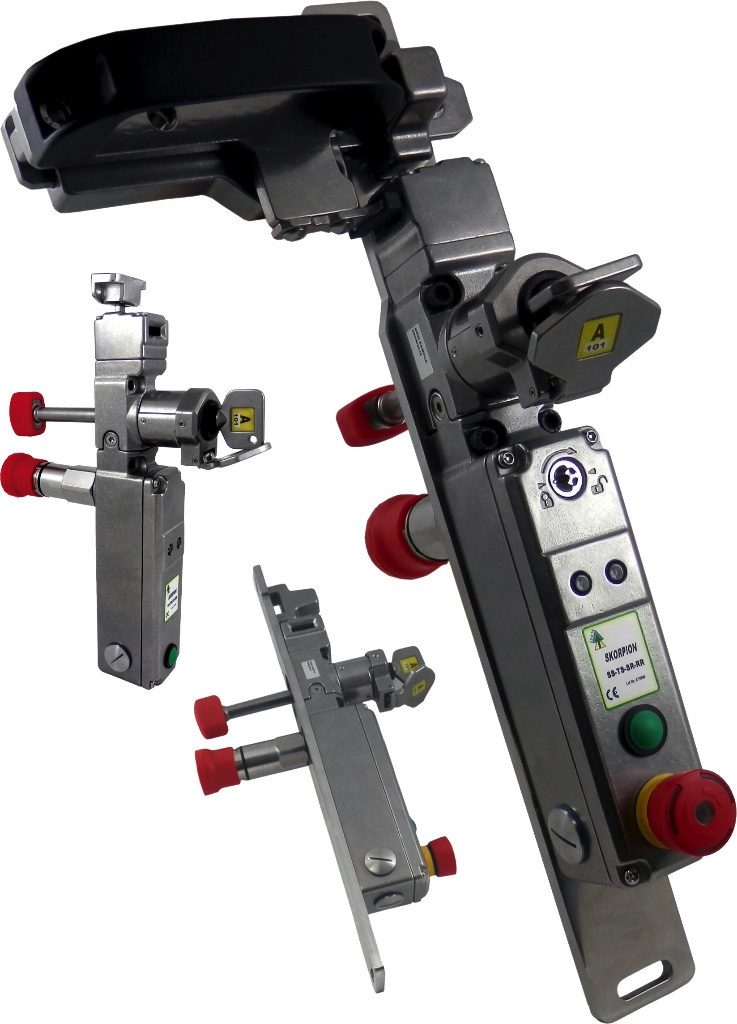| THE PRINCIPLE:
A trapped key guarding system is reliant upon the transfer of coded keys between a power isolation switch (or control switch) and a locking mechanism which is fixed on a guard or guard door. (See example below.)
The primary and essential feature of the system being that the removable key is trapped either in the key exchange, guard lock, or in the power isolation switch.
The interlock on the guard is designed so that the trapped key can only be released when the guard has been closed and locked – preventing the key from being returned to the isolator (or control switch).
Once the guard is closed and locked only then can the key be transferred from the guard back to the isolator (or control switch).
Turning the key to the “ON” position on the isolator switch traps the key preventing the key’s removal while the isolator switch is in the ‘ON’ position.
ADVANTAGES
- No reduction of integrity due to the distance between movable guard and control system.
- High mechanical integrity, robust fixings and holdings suitable for all types of guards.
- Eliminates the need for electrical wiring to each movable guard.
- Available in Stainless Steel 316 – suitable for harsh or hostile conditions.
- Also available in mirror finished Die Cast metal.
- Stainless Steel suitable for CIP and SIP cleaning processes.
- All keys coded in the factory and virtually impossible to override.
- Keys are colour coded and easily identifiable.
- Prevents shortcuts by using a logical set of procedures.
|

